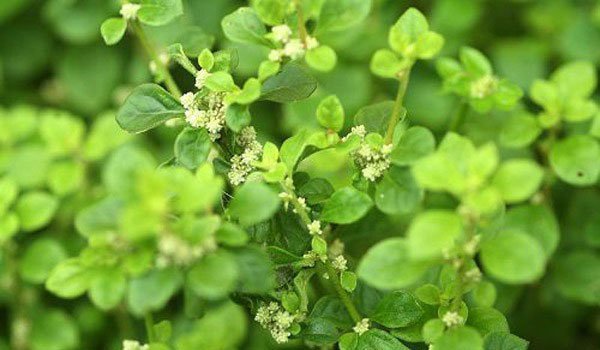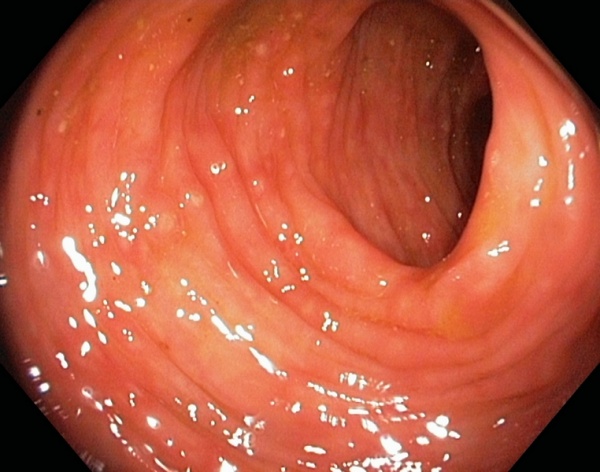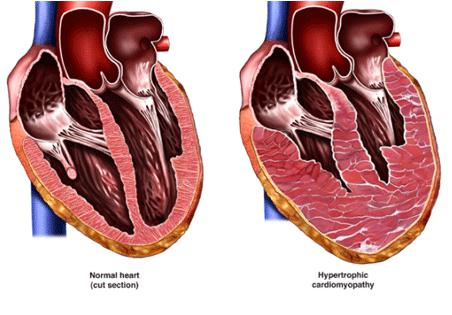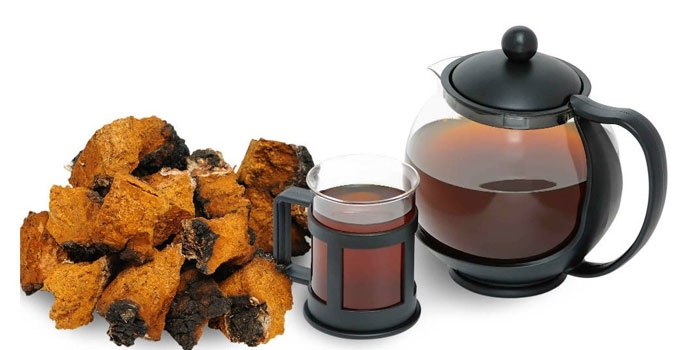Treatment of onychomycosis of toenails - effective regimens for taking medications and folk remedies
Fungal diseases can be defeated at home only by starting therapy in a timely manner and correctly identifying the pathogen, especially if you need to treat onychomycosis of toenails. Several types of dermatophytes, yeast-like fungi, and even representatives of the genus Candida can provoke this disease. By what means can we fight them?
What is onychomycosis
Fungal infections of the nails and adjacent skin are called “mycoses,” and if the disease affects exclusively the nail plate, it is onychomycosis. Infection occurs due to non-compliance with personal hygiene rules: sharing towels, rugs, slippers. The causative agents of onychomycosis can be transmitted through the bottom of a shower stall or sauna. The risk of contracting onychomycosis is especially high in patients with diabetes, people with skin injuries, problems with blood circulation in the lower extremities and weakened immunity. The disease is easy to recognize:
- change in the color of the nail, the appearance of yellow spots or stripes (but the natural shine is preserved) – normotrophic onychomycosis;
- loss of shine and the start of the process of thickening of the nail plates, deformation - hypertrophic onychomycosis;
- atrophy of the affected part and self-destruction from the nail bed - onycholytic mycosis.
General therapy
How you have to deal with nail mycosis is determined by the size of the affected area and the severity of the disease. However, before starting treatment for onychomycosis of toenails, you need to make sure that the problem is not deformation of the plate due to mechanical damage. To do this, you need to visit a dermatologist and undergo diagnostics, which involves laboratory testing of scrapings. If the diagnosis is confirmed, treatment for toenail mycosis will include:
- taking immunomodulators;
- topical use of antifungal creams or ointments;
- use of keratolics;
- physiotherapy.
Use of local antimycotics
External treatment of toenail onychomycosis is the main method of combating this disease, since medications taken orally do not provide the same pronounced effect. Most topical drugs are harmful to all pathogens of onychomycosis, so there is no need to clarify their nature, with the exception of Candida fungus - it requires a separate approach. Mostly doctors prescribe:
- varnishes that protect nails from further spread of fungus (Batrafen, Lotseril);
- ointments or gels that have bacteriostatic, anti-inflammatory, antipruritic properties (Lamisil, Ketoconazole);
- solutions/drops to destroy fungus from the plate and nail folds (Clotrimazole, Exoderil - it is less effective in the form of an ointment).
Medicines
Tablets, unlike local remedies used to treat onychomycosis of toenails, provide a prolonged effect because they accumulate in the body as they are taken. However, this same nuance is the reason for a large number of contraindications and precautions for their use. Often, systemic treatment is prescribed in the absence of obvious results from local treatment, and the following drugs are used for this:
- terbinafine (Terbinafine-Teva, Terbizil);
- itraconazole (Irunin, Miconihol, Teknazol);
- fluconazole (Fluconazole, Mikosist).
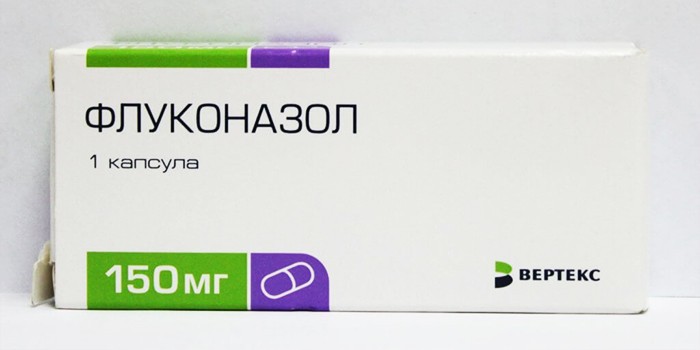
Removing the nail plate
If onychomycosis not only caused the appearance of white or yellow spots, but led to keratinization of the nails, their deformation or detachment, doctors consider it advisable to begin treatment by removing the affected plate, because such a nail can no longer be saved. Firstly, this will prevent the pathogen from actively reproducing. Secondly, medicines will be able to fully work on a healthy surface and inside. The procedure can be done at home or in the hospital:
- Self-removal of the affected nail is carried out using keratolytic plasters, which are glued to the plate (preliminary application of a special ointment is possible) and remain on it until the morning. Their tissue part is impregnated with a special composition that softens dead cells.
- If the doctor insists on complete removal of the plate affected by onychomycosis, this will be an operation that involves local anesthesia and a long recovery.

Physiotherapy
An auxiliary method of treating onychomycosis of toenails is physiotherapy - they are needed to improve blood circulation in the lower extremities. This therapy is not capable of affecting the fungus, so alone it is useless. Doctors often prescribe the following as part of the main treatment regimen:
- UHF and amplipulse effects on the lumbosacral and cervical regions for a week.
- Diathermy on the lumbosacral area.
- Laser therapy (blood irradiation) on peripheral vessels.

Medicines
Local treatment of fungus requires systematicity: you need to use medications prescribed by your doctor every day, often combining them - apply something in the morning, something at night. Before using these products, be sure to steam your nails, remove the free edge, and, if necessary, remove the affected area. Often, at the initial stage of treatment, only varnishes are used, and later the question arises about the advisability of purchasing ointments/gels and solutions, especially if onychomycosis is already characterized by nail detachment or destruction.
Varnish
The advantage of such a remedy for the treatment of onychomycosis of toenails is the format: the liquid substance hardens quickly, so it does not stain things and surfaces. However, the varnish only affects the nail plate, so it does not affect nearby tissues. The film it creates prevents the proliferation of fungal spores, and after a couple of days the pathogen dies. Doctors provide the following remedies:
- Loceryl - based on amorolfine, destroys fungal cells, can be used to prevent onychomycosis. Used after steaming the legs. The Lotseryl varnish set includes a nail file, swabs and a spatula. The downside is the high price: from 1400 rubles.

- Batrafen is considered the most effective among other varnishes; it works on ciclopirox. It affects 58 types of fungi, killing them, and helps relieve inflammation. It must be applied exactly according to the instructions. Price – from 2000 rub.

- Mikozan - works on plant components, so it has a small number of contraindications, helps strengthen nails. The drug prevents the growth of the fungus and provokes its death. Used within a month after cleaning the plate. The price of varnish is from 500 rubles.

Creams, gels and ointments
Among all the means for local long-term therapy of fungal diseases of the nail plate, ointments and creams are especially widespread. They are inconvenient because they have to wait for absorption, but their spectrum of action is wider than that of varnishes. They not only have a destructive effect on the fungus, but also relieve inflammation and eliminate unpleasant symptoms. Apply only after steaming your feet for maximum effect. Doctors advise:
- Lamisil cream is based on terbinafine, which breaks the cell membrane of the fungus. The drug is highly effective, but it needs to be used for several months, up to 2 times a day.
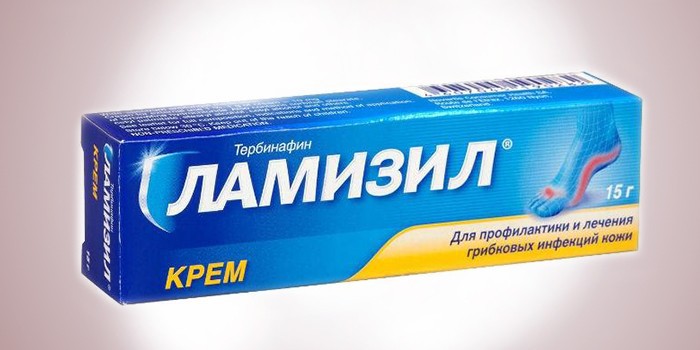
- Exoderil cream is a popular antifungal agent that works on naftifine, destroys all fungi, and stops inflammation. Used for up to 8 weeks, once a day on a schedule (at the same time).

- Candida cream differs from others in its ability to influence the causative agent of candidiasis, is well tolerated, is used for 4 weeks up to 2 times a day.
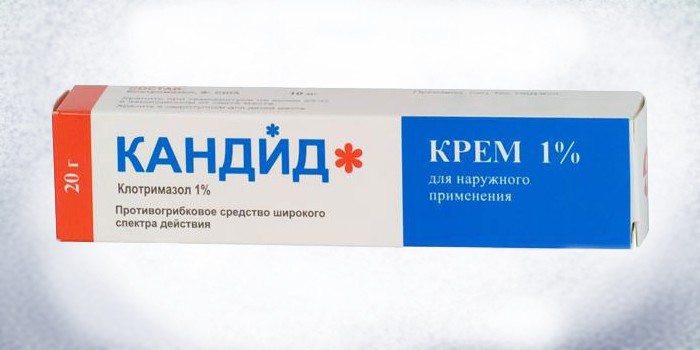
Local medications for mycosis often do not cause adverse reactions; among the contraindications they have only increased sensitivity to the active component. If they are based on allylamines (naftifine, terbinafine), they can accumulate and therefore have a prolonged effect. The picture of prices for the most effective ones can be tracked in the table:
Antimycotic sprays and solutions
This type of drug for mycosis is used up to 2 times a day and is effective only as a complementary element to the main treatment regimen. Most of the solutions and sprays work on azoles/allylamines; they are applied not only to the plate (it is important to get into the root zone), but also to the nail fold. Mostly doctors recommend:
- Terbix;
- Mycosporus;
- Thermikon.
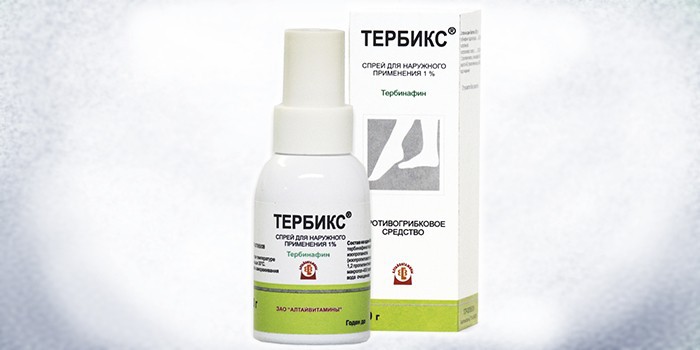
Pills
Systemic treatment is used when the disease begins to progress - until this point, local therapy is mainly used. For onycholytic mycosis, an antibiotic (Griseofulvin) is prescribed orally, combined with an external keratolytic agent. Griseofulvin is taken with 1 tsp. vegetable oil 250 mg up to 3 times a day, and at the same time use varnishes Batrafen, Lotseril, etc. In other situations, azoles and allylamines are prescribed, the price picture for which looks like this:

Azoles
The most extensive group of drugs for the treatment of onychomycosis are azole-based drugs: they provide a fungicidal and fungistatic effect. Firstly, they suppress the synthesis of the fungal cell membrane, and, secondly, when accumulated, they lead to the death of all pathogenic microorganisms. They are prescribed mainly against yeast-like fungi and dermatomycetes. Azoles are used up to 3 times per day, the course lasts 4 weeks. The most effective:
- ketoconazole (Mikozoral, Ketoconazole) - drink 1 tablet per day;
- intraconazole (Mikonihol, Irunin) - drink 2 capsules a day, treatment can last six months.
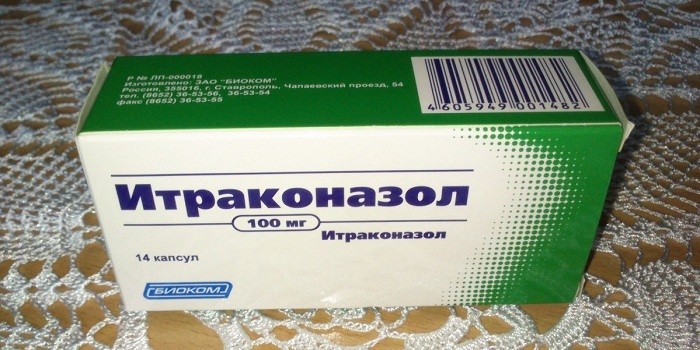
Allylamines
The ability to block fungal growth in allylamines is combined with the ability to rupture the cell membrane, which destroys the microorganism. Some of them affect all types of fungi, while naftifine is used primarily against additional bacterial infections, but it is produced only for external use. Allylamines penetrate into the thickness of the nail plate and give a prolonged effect. Duration of treatment is up to 3 months. There is only 1 remedy - Terbinafine (Lamisil, Terbinafine):
- efficiency is 94%;
- course of treatment up to 3 months;
- intake – 250 mg after meals once a day;
- The drug should not be used during breastfeeding; a high load on the liver cannot be ruled out.
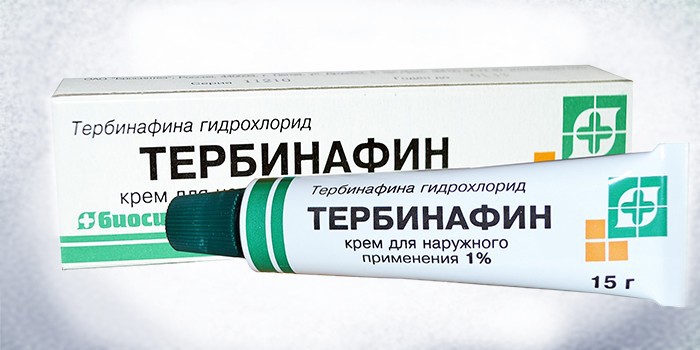
Drugs to improve blood circulation in small vessels of the extremities
In order to increase the effectiveness of the main therapy, you can also take a course of medications that affect blood circulation in the fingers and toes: they help transport the substances contained in antifungal drugs in their original concentration. Additionally, the treatment period is reduced, since a healthy nail plate grows faster. Make sense:
- Trental;
- Agapurin;
- Doxium;
- A nicotinic acid.
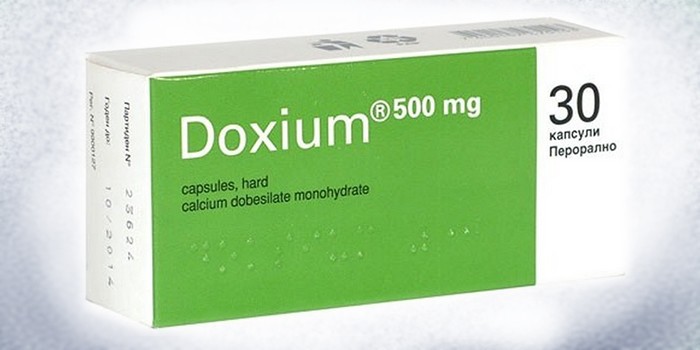
Laser removal
An alternative to conservative surgery is laser removal of the affected area. The procedure, according to doctors, is quick and safe, with minimal discomfort, lasts up to half an hour, and has no side effects. It goes like this:
- The doctor chooses a laser based on the type of fungus and the severity of the disease.
- The thickened area of the nail plate is cut down and treated with an antiseptic.
- The affected area is irradiated for several minutes to destroy the fungus.
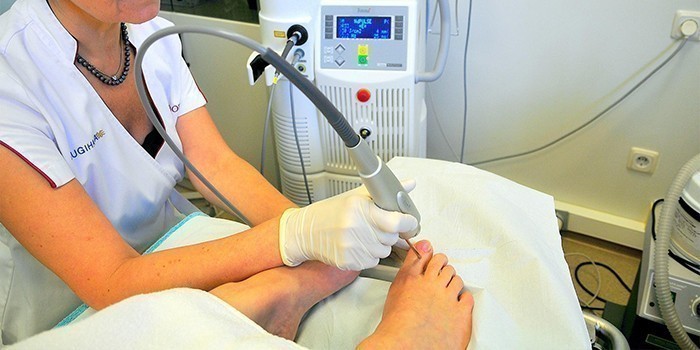
Traditional methods
The use of alternative medicine recipes implies a long-term fight against onychomycosis and, according to experts, it is advisable to combine such treatment with medication, especially in the case of subungual hyperkeratoses, advanced mycosis and infection with the Candida fungus. It is advisable to perform all the procedures listed below daily for 3-4 weeks.
Apple vinegar
The classic method of treating onychomycosis is foot baths with apple cider vinegar: it is poured into warm (!) water, the proportion is selected by eye. Doctors advise taking 3-5 tbsp. l. for 3 liters of water. The feet are kept in the basin for 15 minutes, after which they must be wiped dry, paying attention to the spaces between the toes. This procedure is the starting point for subsequent treatment measures: applying creams, applying compresses, etc.
Garlic compress
Garlic has a strong antibacterial quality, which, in order to eliminate nail mycosis, must be passed through a press and placed between layers of gauze. For a more pronounced effect, it can be mixed with grated onion, and some experts advise adding a drop of vodka. The compress is applied at night, making sure to wrap the fingers with film.
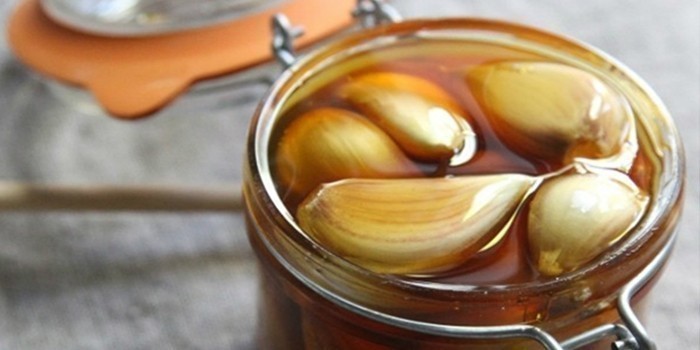
Doctors also call the application of compresses, which are a piece of gauze folded several times and soaked in tea tree oil, as a cost-effective way to treat onychomycosis. It is fixed with a plaster, applied in the evening, and removed in the morning. Tea tree has a strong antibacterial property and acts as a light keratolic, so after several procedures you can remove the affected area of the nail.
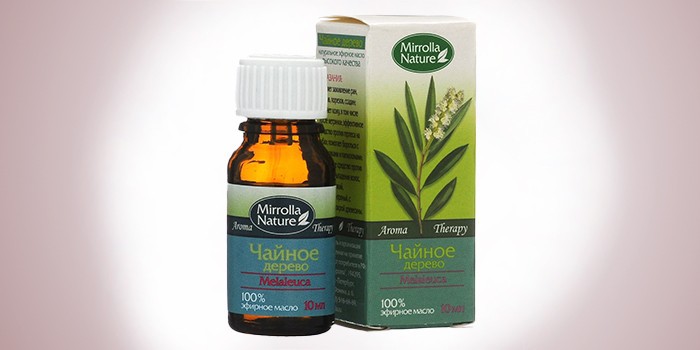
Baths with celandine
In summer, treatment of fungal diseases can be carried out using celandine: for this purpose, take flowers and pour boiling water over them. Proportion – 100 g per 1 liter. When the liquid boils, count 10 minutes and remove the broth from the stove. After cooling and filtering, it is poured into a basin and diluted with a liter of clean boiling water. If it is very hot, it is allowed to cool a little more, and the feet are placed in this bath for 15 minutes.
Peppermint with sea salt
Mint, which is used exclusively fresh, has also proven itself to be good in treating fungus. To do this, the leaves need to be washed well, chopped with a knife or passed through a garlic press. Later it is mixed half and half with coarse sea salt and allowed to stand for half an hour. The resulting mixture can be applied to the affected nail either with or without gauze, but always for 8-10 hours. It is advisable to start the procedures when the plate thickens, but is not yet deformed.
Chaga mushroom
The mass of antiseptic substances contained in this product has led to its active use against infectious diseases. Treatment of onychomycosis of toenails with kombucha involves simple lotions with a piece of this product, which is fixed with a plaster or bandage. The procedure should be carried out in the morning and evening, keeping the lotion for 6-8 hours.

Prevention
If you consider yourself to be at risk, be sure to strengthen your immune system and carefully monitor your personal hygiene, especially if you tend to visit the bathhouse, sauna, or swimming pool. Treat your slippers with alcohol, do not take other people's personal belongings - then you won't have to think about how to treat mycosis of the nails. It would be a good idea to make weak iodine solutions (3 drops per 2 liters of water) and rinse your washed feet with them every day after visiting public places.
Video
- Intercostal neuralgia - what it is and how to treat it
- How to quickly get rid of dry calluses on feet
- How to treat left ventricular hypertrophy
- Rating of the best drugs against rotavirus for children
- Making tea from currant leaves, the benefits and harms of the drink
- How to drink hydrogen peroxide according to Neumyvakin - oral dosage regimen
- Features of the treatment of plantar fasciitis with folk remedies
- Composition and beneficial properties of parsley root
- How to get pregnant quickly? Folk remedies
- Herbal ants in the “pot-bellied” period or the use of herbal medicine during pregnancy
- Why does a sore throat and dry cough occur, and what treatment is required?
- An effective cure for rotavirus and proper nutrition for the disease
- How to quickly cure a viral infection at home
- Tormented by snoring, how to get rid of it: all the ways to combat the disease
- Paul fell grass medicinal uses
- Consequences of drug addiction: the effect of drugs on the human body
- — Exercises, folk remedies, drugs
- Nyak - treatment with folk remedies: herbs, homeopathy, methods according to Naumov
- Causes, symptoms and diagnosis
- Folk remedies for large uterine fibroids




